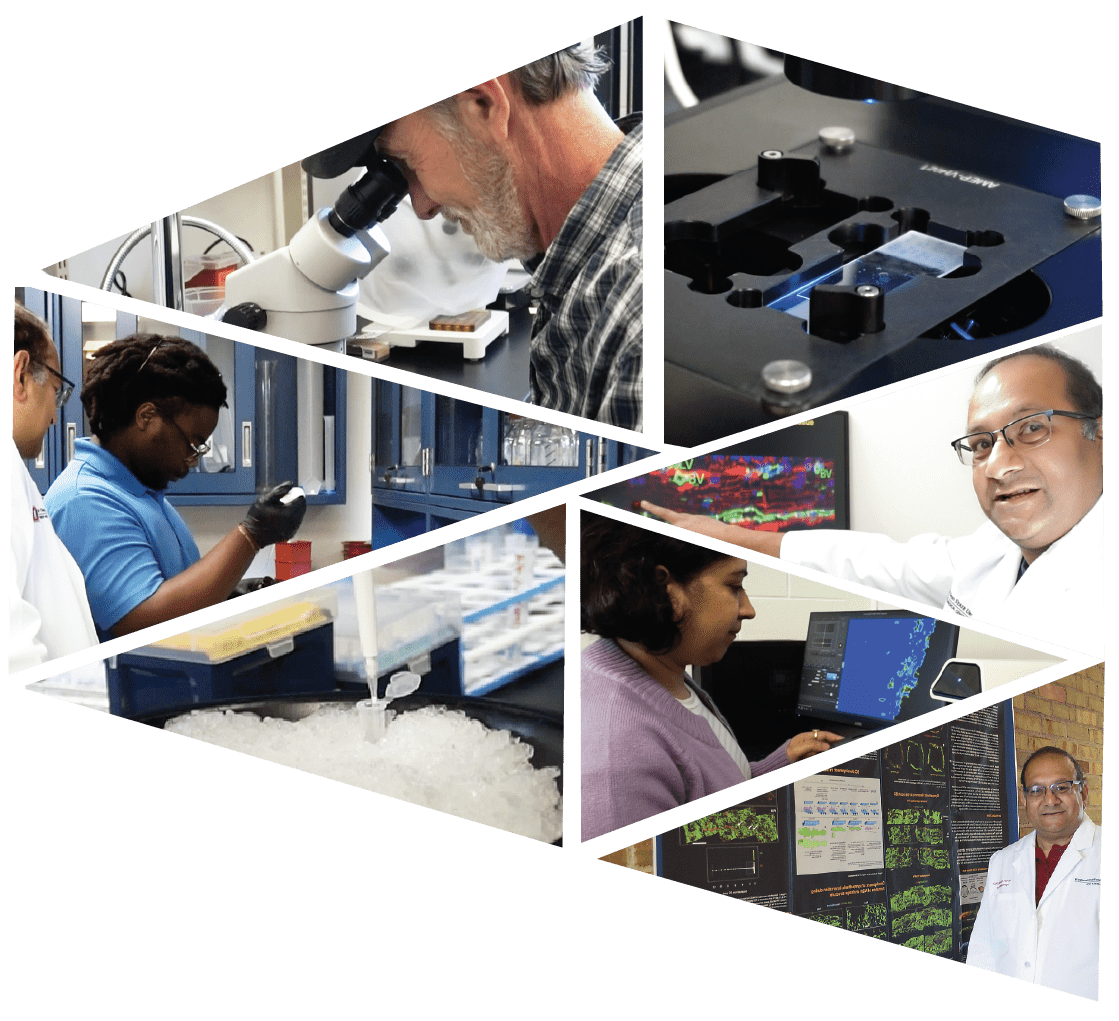Celluar and Molecular Basis of Introcular Pressure Regulation
Krishnakumar Kizhatil, PhD

Dr. Kizhatil is a cell and developmental biologist working to find cures for glaucoma. He is an NIH-funded researcher focused on determining the molecular basis of intraocular pressure regulation. He uses animal models to understand the mechanistic basis of human glaucoma-associated gene functions and associated pathways to identify new druggable targets to control eye pressure and glaucoma. Dr. Kizhatil’s group uses cutting edge cell biology methods, genomics and state of the art microscopy to study the development and biology of Schlemm's canal, an essential structure for controlling eye pressure. His group aims to develop tools with clinical potential to control Schlemm’s canal (SC) function to reduce eye pressure.
The Kizhatil lab investigates SC biology in the context of aqueous humor outflow (AQH) and intraocular pressure (IOP) regulation. Recent single-cell and bulk sequencing studies from the lab confirmed the lab’s previous finding of SC’s unique vessel phenotype, combining lymphatic and blood vessel traits. These findings serve as a molecular framework to explore pathways controlling IOP. Building on these insights, the lab’s research focuses on lymphatic molecules, mechanotransduction, and amino acid transporters in SC. Recently the lab found that mechanotransduction of IOP elevation in SC cells activates FYN tyrosine kinase which phosphorylates cell-cell adhesion protein VE-CADHERIN to loosen SC junctions, increasing AQH outflow, and reducing IOP. Additional projects investigate roles of primary cilia and glycocalyx in mechanotransduction. Another key aspect of the lab is to find function of human glaucoma genes using mouse models in SC and retinal ganglion cells. These efforts aim to identify novel drug targets for glaucoma therapy.

